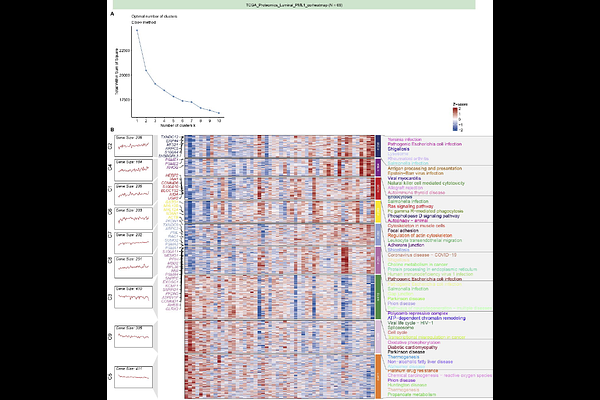PML1-Mediated Feedforward Loop Through PI3K and MAPK Axes Drives Endocrine Resistance

PML1-Mediated Feedforward Loop Through PI3K and MAPK Axes Drives Endocrine Resistance
Wang, H.; Yun, Z.; Cao, Y.; Li, X.; Liu, Z.; Pai, C.-P.; Wu, C.; Yue, J.; Lin, G.; Cai, J.; Willard, B.; Yang, S.; Keri, R. A.; Schiemann, W. P.; Diehl, J. A.; Kao, H.-Y.
AbstractTreatment of estrogen receptor-positive (ER+) breast cancer is significantly hindered by endocrine resistance. We identified PML1 as a key therapeutic entity that can be targeted to overcome resistance. Endocrine-resistant breast cancer cells share three key characteristics: elevated PML1 protein levels, enhanced activity of PI3K, MAPK, or both signaling pathways, and reduced ER activity. We developed a PML1 gene signature that predicts poor prognosis and correlates strongly with PI3K, MAPK, and endocrine resistance gene signatures, as evident by cellular studies, scRNA-seq analysis, and spatial transcriptomics of endocrine therapy-treated tumors. This signature is present in endocrine-resistant breast cancer cells harboring the Y537S ER mutation. We consistently demonstrate high PML1 protein levels across cells resistant to various treatments, including 4-hydroxytamoxifen, fulvestrant, elacestrant, and CDK4/6 inhibitors. Furthermore, treatments with these therapeutic agents or knockdown of ESR1 mRNA also increase PML1 protein levels. Mechanistically, we show that ER inhibition through fulvestrant treatment activates PI3K and MAPK signaling, which enhance PML1 protein stability and synthesis. PML1 then drives a feedforward loop by stimulating the expression of cytokine and growth factor mRNAs, including CCL5 and HBEGF, further amplifying PI3K and MAPK signaling. Consequently, in endocrine-resistant cells, endocrine therapies, while inactivating ER, paradoxically reinforce this loop through increased PI3K/MAPK activation and PML1 protein accumulation, ultimately compromising therapeutic efficacy. Finally, we demonstrated that arsenic trioxide, an FDA-approved, PML-reducing drug, effectively disrupts this feedforward loop, offering a promising strategy for treating resistant metastatic breast cancer.